Isaac Schultz
Thu, September 7, 2023

A slice of the brilliant globular cluster Terzan 12.
Behold the celestial bounty of space. In an image recently taken by the Hubble Space Telescope, a proliferation of stars in the globular cluster Terzan 12 shine through interstellar gas and dust, making the entire image glow with activity.
The globular cluster is about 15,000 light-years from Earth in the constellation Sagittarius. Globular clusters are groups of ancient stars that populate the area on either side of galactic disks, including that of our own Milky Way. The clusters can be hard to distinguish amid the busyness of space and are sometimes shrouded with dust and gas. That is the case with Terzan 12, but the globular cluster still looks stunning on camera.
Besides looking pretty and conveying a semblance of how much stuff is in space, globular clusters have a few tricks up their sleeve. Two years ago, a team of researchers looking at the globular cluster NGC 6397 found that a group of small, star-sized black holes are lurking in the cluster, holding stars together with their gravity.
That’s not entirely a surprise, as stellar-mass black holes form when an ancient star collapses in on itself, leaving the void-like shadow of black hole in its wake. The globular cluster Palomar 5, for example, is a 10-billion-year old group of stars that has roughly three times more black holes than expected based on the number of stars in the cluster. That team posited that in about one billion years, Palomar 5 will be completely dominated by black holes.
Terzan 12 has a brighter future, at least for the foreseeable. (By the way, it’s really the 11th globular cluster discovered by the Turkish-Armenian astronomer Agop Terzan because Terzan 5 was counted twice. To avoid confusion, Terzan 12 has just been called that, in spite of a missing Terzan 11.)
Because of their superlative age, globular clusters help astronomers understand the life cycles of stars and even seek out binary systems of ancient (and dead) stars, like neutron stars and black holes. But to the lay viewer (and indeed, the astronomer), they’re just a wonderful sight to behold.
Jackie Wattles, CNN
Thu, September 7, 2023
After completing a historic landing on the lunar surface, putting India in the tiny club of countries that have safely placed a spacecraft on the moon, the Chandrayaan-3 lander is now asleep — resting through the 14-day lunar night before mission controllers attempt to reawaken the spacecraft later this month.
The primary goals of the mission have now been successfully checked off the list, cementing the Chandrayaan-3 lander’s legacy in exploration history. For nearly two weeks, the lander carried out technology demonstrations and data collection mainly focused on analyzing the composition of the moon’s soil and super-thin atmosphere.
The Chandrayaan-3 spacecraft landed on the lunar surface on August 23. The safe touchdown made India only the fourth nation in the world to complete such a feat, following the former Soviet Union, the United States and China. So far in the 21st Century, only China and India have landed on the moon.
It also marked the first mission to explore so close to the lunar south pole, a region of key scientific and strategic importance for global space powers because it is believed to be home to deposits of water ice. The resource could be harvested and converted into drinking water or even rocket fuel for future missions that explore deeper into the cosmos.
In India, the Chandryaan-3 mission has been hailed as a point of national pride. More than 70 million people watched online coverage of the landing, and thousands more packed into auditoriums and viewing parties across the country.
“Our tireless scientific efforts will continue in order to develop better understanding of the Universe for the welfare of entire humanity,” Indian Prime Minister Narendra Modi posted on social media September 2, celebrating the Chandrayaan-3 mission and the recent launch of India’s first spacecraft dedicated to studying the sun
The Chandrayaan-3 lander is captured by NASA's Lunar Reconnaissance Orbiter, which is currently in orbit around the moon. The Chandrayaan-3 spacecraft's dark shadow is visible against a bright halo surrounding the vehicle, which resulted from the rocket plume interacting with the fine-grained regolith (soil). - NASA's Goddard Space Flight Center/Arizona State University
The Indian Space Research Organization, or ISRO, confirmed on Monday, September 4, that the Chandryaan-3 lunar lander had been put into sleep mode, as the spacecraft isn’t designed to continue collecting scientific data while its landing spot is in the Earth’s shadow, or lunar night.
But the space agency hopes that the lander — and a small six-wheeled rover it deployed — will be reawakened later this month, on September 22.
A look back at Chandryaan-3
The Chandrayaan-3 landing in August came mere days after Russia failed in its attempt to put a similar spacecraft, Luna-25, near the moon’s south pole. Standing in sharp contrast to the tense failures of Luna-25, the Chandryaan-3 vehicle almost immediately began dispatching updates on its successes.
The day after landing, the ISRO confirmed that the Chandryaan-3 lander had successfully deployed the six-wheeled lunar rover that had ridden to the surface tucked inside the spacecraft’s body.
It was released by rolling down a small ramp before setting off “in pursuit of lunar secrets at the South Pole,” the ISRO said on X, the website formerly known as Twitter.
Together, the lander, which weighs about 1,700 kilograms (3,748 pounds), and the 26-kilogram (57.3-pound) rover are packed with nearly a dozen scientific instruments. They include a laser that can analyze the chemical composition of the moon’s regolith — aiding in the hunt for water ice — and the ultra-thin layer of gases that make up the moon’s exosphere. The rover is also equipped with a seismometer that attempted to detect quakes within the moon’s interior.
The ISRO confirmed that all the instruments were “performing normally” during the mission.
The space agency shared sporadic updates on social media, posting first glimpses at various data points gathered by the lander and rover, which managed to travel a total of more than 100 meters (330 feet) across the lunar surface and was able to snap photos of the lander during its trek.
One experiment measured the temperature of the moon’s topsoil at various depths, and ISRO scientist BHM Darukesha told a local news outlet, PTI, that the surface was hotter than expected.
“We all believed that the temperature could be somewhere around 20 degree centigrade to 30 degrees centigrade (68 to 86 degrees Fahrenheit) on the surface but it is 70 degree centigrade (158 degrees Fahrenheit). This is surprisingly higher than what we had expected,” he said.
The rover also detected some seismic activity using an instrument designed to measure rumbles and quakes beneath the lunar surface, and the rover used a spectroscope to confirm the presence of sulfur near the moon’s south pole. Now scientists will aim to investigate how the element got there and whether it exists naturally on the surface or was put there by a meteor strike or volcanic activity, according to the ISRO.
The ISRO put the rover to rest on September 2, though its solar panels were oriented to catch the first sun rays as the moon travels back into daytime later this month.
“Hoping for a successful awakening for another set of assignments! Else, it will forever stay there as India’s lunar ambassador,” the ISRO posted on X.
But the lander wasn’t finished. It completed another stunning feat on September 4, firing up its engines to lift itself about 40 centimeters (16 inches) off the ground and make a small hop to land about 30 to 40 centimeters (12 to 16 inches) away from its original position.
The ISRO emphasized the importance of this technology demonstration, noting that being able to get a lander back off the lunar surface will be essential for future missions that aim to return soil samples — or even astronauts — back home after a lunar mission.
Shortly after, the lander joined the rover, entering its own slumber and awaiting its reawakening when the sunshine returns to its resting place.
It’s not yet certain that the lander and rover will, in fact, properly function when mission controllers attempt to turn them back on later this month.
But all of the primary objectives the ISRO set out for the mission have been met.
Robert Lea
Thu, September 7, 2023 at 3:00 AM MDT·5 min read
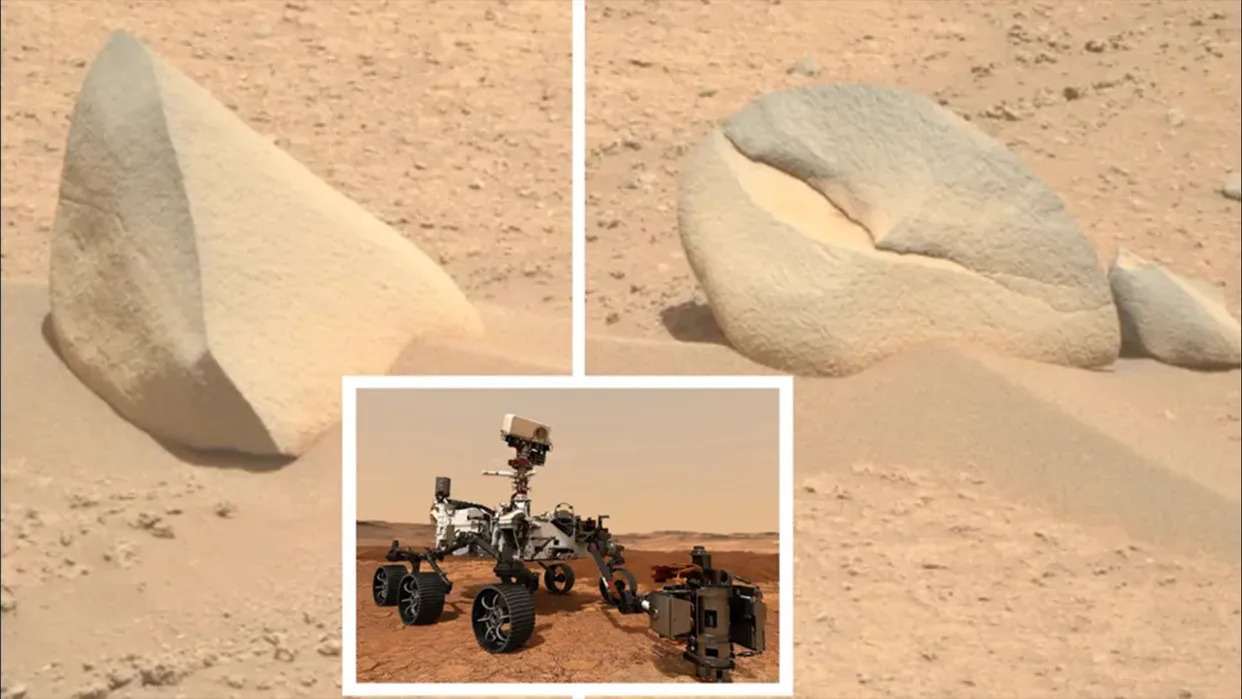
(Left) a shark fin shaped rock on Mars (Right) an accompanying crab claw shaped boulder (Insert) NASA's Perseverance Rover.
It looks like something fishy is happening on Mars. NASA's Perseverance Rover recently spotted a shark-fin-looking outcrop and an accompanying crab-claw-like boulder on the Red Planet.
Since arriving on Mars on Feb. 18, 2021, the rolling robot has been exploring the Jezero Crater on Mars while hunting for signs of ancient life. But these strange rocks, captured on Aug. 18, 2023, came as surprise.
Even though the now barren and arid landscape of Mars overflowed with water billions of years ago, there is no evidence that the planet was abundant with any sort of seafood, and these images certainly don't change that. Instead, what the rocks in the image evidence is the phenomenon of pareidolia.
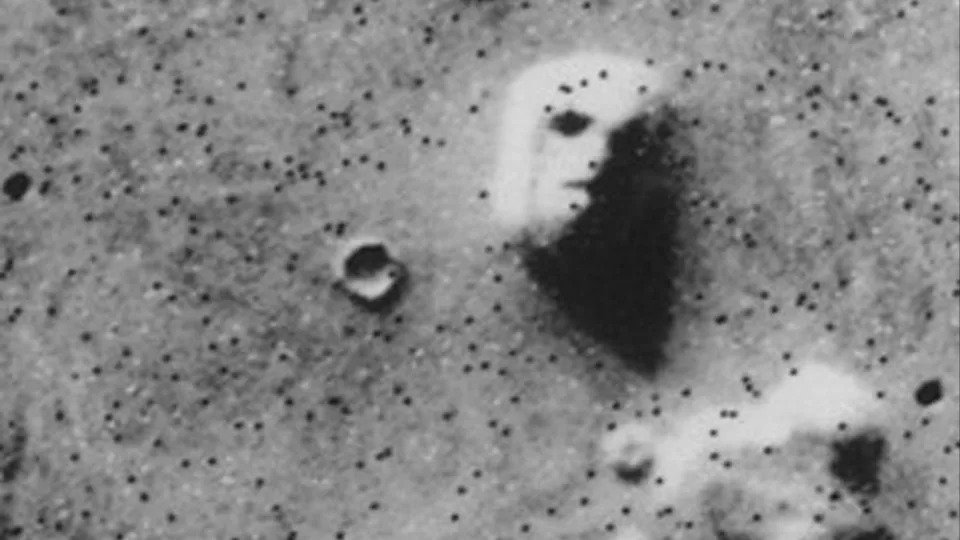
The infamous Face on Mars, an illusion created by shadows that caused quite a stir in the 1970s and 1980s.
Pareidolia refers to the brain's tendency to perceive a meaningful image from random visual data. It is the reason we see dogs or clowns in clouds, and it has been responsible for humans catching a wide variety of famous figures in foodstuff. And Mars is no stranger to being subjected to pareidolia.
In fact, one of the most famous examples of pareidolia in history is the iconic "Face on Mars."
Related: NASA spies Martian rocks that look just like a teddy bear
What was the Face on Mars?
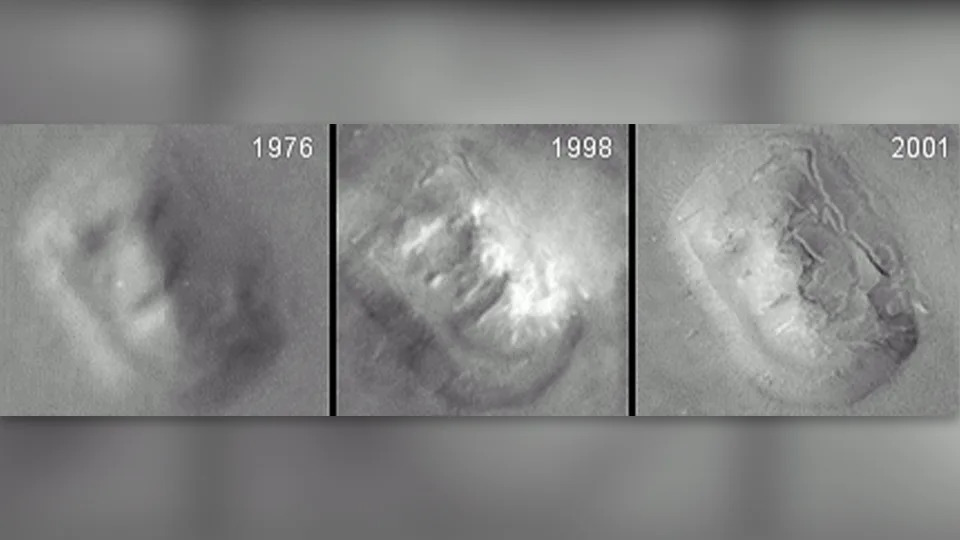
Subsequent images of the Face on Mars taken over the years sees the facial features fade away.
In July 1976, NASA's Viking 1 spacecraft was exploring Mars from orbit, taking pictures of the Martian landscape that would later be used to select a landing site for the Viking 2 lander. Then, something extraordinary was revealed in the monitors of its operators here on Earth.
The spacecraft had appeared to capture a huge sculpture of a crudely drawn face replete with eyes, a nose and a mouth. The image was shown to the public a few days after it was taken, and despite NASA being clear the appearance of a face was an illusion caused by shadows, it caused quite a fuss. Many claimed that this was the work of sentient beings.
The debate surrounding the "Face on Mars" raged (at least in certain quarters) through the 1980s, with books published on the topic and even scientific conferences held to discuss it.
Much of the sensationalism surrounding this image was settled in the late 1990s. In Sept. 1997, NASA's Mars Global Surveyor (MGS) arrived at the Red Planet, with one of its primary missions being to reexamine this rocky outcrop.
"We felt this was important to taxpayers," chief scientist for NASA's Mars Exploration Program Jim Garvin explained in a statement. "We photographed the Face as soon as we could get a good shot at it."
In April 1998, the MGS finally flew over the Cydonia region of Mars, where the supposed Face on Mars was located, capturing images ten times sharper than those taken 18 years prior by Viking 1. These revealed the formation to be much more natural in nature, with evidence of facial features fading. Still, some insisted the facial features of this supposed alien monument had been obscured by haze as the MGS flew overhead.
However, such objections were dealt a serious blow in April 2001 when the same spacecraft imaged the outcrop on a cloudless day for Cydonia. This revealed the Face on Mars to be a butte, or mesa, which is a common geological feature in the western United States.
"It reminds me most of Middle Butte in the Snake River Plain of Idaho," Garvin said. "That's a lava dome that takes the form of an isolated mesa about the same height as the Face on Mars."

Yet, the revelation that this Martian facial sculpture was little more than a common geological structure hasn't quelled our passion for space simulacrum.
In May of this year, Perseverance's fellow Martian rover caught a shadowy feature in a rock face nicknamed the "East Cliffs" that many claimed was a "doorway" carved into the rock. Some even speculated that this could be one end of a passageway leading to an underground bunker.
NASA poured cold water on speculation when it revealed this so-called doorway was little more than a few inches wide and tall. Geologists also spoiled the party by adding that it is likely the result of several straight-line fractures coinciding.
But there was more to discuss as a recent image by the agency's Curiosity rover seemed to show an abandoned spoon floating over the surface of the Red Planet.
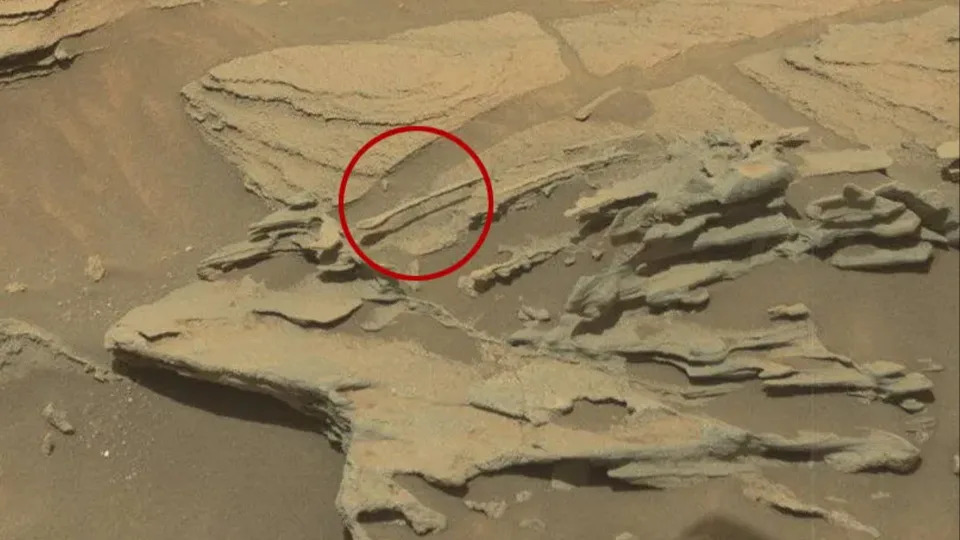
Is that really a floating spoon on Mars or just a strange rock?
The hovering cutlery imaged on Aug. 30 was actually revealed to be a strangely shaped rock, with NASA officials writing in an image description: "There is no spoon. This weird Mars feature is likely a ventifact — a rock shaped by wind."
The "Martian spoon" is just further evidence that humans really eat up all Mars-related pareidolia. Though these images ultimately represent random rock formations, speculating about their significance can be fascinating in itself.
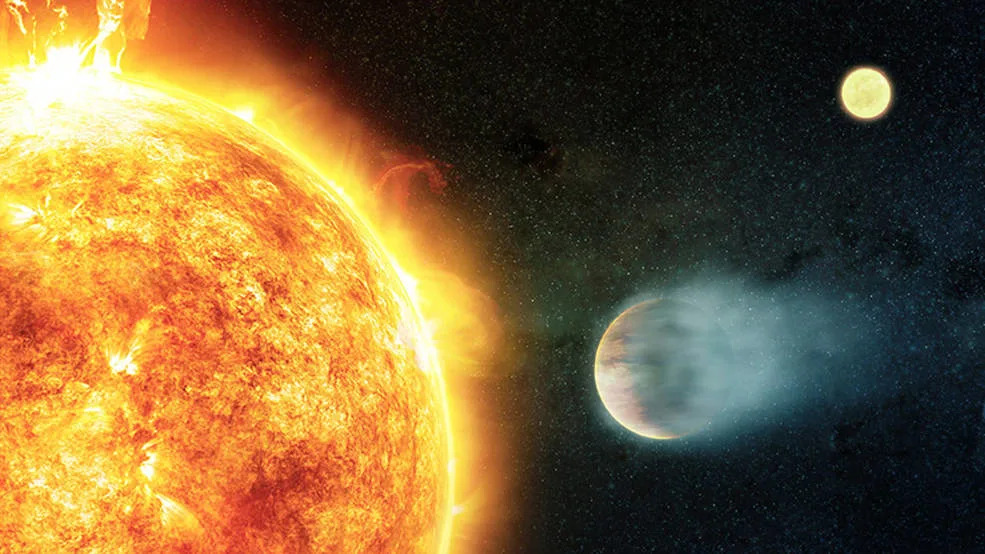
An artist's impression of a hot Jupiter blasting out its atmosphere and creating a huge gaseous tail
A planet located 950 light years from Earth is explosively losing its atmosphere and creating a tail that is around 18 times the size of Jupiter in the process. This makes the gaseous tail one of the largest planetary structures seen outside the solar system.
The extra-solar planet, or exoplanet, known as HAT-P-32 b has a mass around 68% that of Jupiter but is twice as wide as the solar system's largest planet. HAT-P-32 exists just 3.2 million miles from its parent star, or about 3% of the distance between Earth and the sun, and completes an orbit every 2.2 days. This proximity means the gas giant is roasted by radiation from its parent star, classifying HAT-P-32 b as a "hot Jupiter" planet.
Astronomers have monitored the trailing gas tail of HAT-P-32 b created from helium flowing from its atmosphere with telescopes from Earth, including the Hobby-Eberly Telescope of The University of Texas at Austin's McDonald Observatory. "We have monitored this planet and the host star with long time series spectroscopy, observations made of the star and planet over a couple of nights," research lead author and University of California Santa Cruz, Department of Astronomy and Astrophysics postdoctoral fellow Zhoujian Zhang said in a statement. "And what we found is there's a gigantic helium gas tail that is associated with the planet. The tail is large — about 53 times the planet's radius — formed by gas that's escaping from the planet."
By learning more about how this hot Jupiter is losing its atmosphere, a team of researchers hopes to build a better picture of planetary evolution. This could help solve a puzzling absence of a specific planetary type in the exoplanet catalog.
Related: New 'warm Jupiter' exoplanet has a weird orbit and another planet may be to blame
Using a hot Jupiter to investigate the "hot-Neptunian desert"
Since the first planets outside the solar system were first discovered in the 1990s, exoplanet hunters have found over 5,000 worlds orbiting distant stars, and these come in an array of shapes, masses, and characteristics. Yet there remains a puzzling gap in our exoplanet catalog.
Astronomers have discovered a vast array of large Jupiter-sized planets orbiting close to their stars and fewer, but still a considerable number of small Earth-sized worlds proximate to their stellar parents.
What seems to be missing, however, are intermediate-sized planets orbiting close to their parent stars. Astronomers refer to such planets as "hot-Neptunes" after the solar system ice giant of a similar size, and thus, the absence of these worlds is called the "hot-Neptunian desert."
One of the possible explanations for this absence is that planets close to their stars are being stripped of their atmosphere and are thus losing mass.
"If we can capture planets in the process of losing their atmosphere, then we can study how fast the planet is losing its mass and what are the mechanisms that cause their atmosphere to escape from the planet," Zhang explained. "It's good to have some examples to see, like the HAT-P-32 b process in action."
The team studied HAT-P-32 b, which was discovered in 2011, by observing light coming from its parent star, which is around the same size as the sun and is slightly hotter than our star. When the hot Jupiter passes in front of the star, starlight is filtered through the planet's atmosphere.
Because chemical elements absorb light at specific frequencies, astronomers can compare starlight that has filtered through the atmosphere to starlight that hasn't, helping them determine the chemical composition of the planet's atmosphere. Searching for these absorption gaps is called "transmission spectroscopy."
Performing transmission spectroscopy for HAT-P-32 b revealed deep helium absorption lines in starlight when the planet transited the star.
"The helium absorption is stronger than what we expect from the stellar atmosphere. This excess helium absorption should be caused by the planet's atmosphere," Zhang said. "When the planet is transiting, its atmosphere is so huge that it blocks part of the atmosphere that absorbs the helium line, and that causes this excess absorption. That's how we discovered the HAT-P-32 b to be an interesting planet."
But, to better understand it, they created a 3D simulation of this hot Jupiter using the Stampede2 supercomputer of the Texas Advanced Computing Center (TACC). And the computer modeling of the planet revealed it to be even more interesting than even these observations had suggested.
The computer simulations developed by the Harvard-Smithsonian Center for Astrophysics Institute for Theory and Computation researcher Morgan MacLeod, and colleagues modeled the interaction between the outflow of gas from the planet and stellar winds from its parent star.
This showed that planetary outflow was both trailing and leading HAT-P-32 b in its orbital path.
The team was also able to calculate the rate of mass loss for the planet, finding that it would take 40 billion years for HAT-P-32 b to completely lose its atmosphere. The planet is unlikely to survive this long, however; F-type stars like the planet's host star HAT-P-32 A only have lifetimes of between 2 to 4 billion years, after which they exhaust the hydrogen at their cores used for nuclear fusion.
This causes the star's core to collapse and the outer layers where nuclear fusion is still ongoing to swell out. This increases the star's radius up to a hundred times, resulting in the creation of a red giant. When HAT-P-32 A undergoes this process, the exoplanet is so close to it, that it and its remaining atmosphere are likely to be engulfed.
In the future, the team intends to study other planets similar to HAT-P-32 b to observe their evolution. Additionally, the researchers behind the supercomputer model will now develop other sophisticated simulations for exoplanet dynamics.
This could deliver simulations that can model other effects like the mixing of gas gases in planetary atmospheres and even how the winds move through atmospheres for planets hundreds or even thousands of light-years from Earth, too far for these effects to be observed with current telescopes.
"Now is the time to have supercomputers with the computational power to make this happen," Zhang concluded. "We need the computers to make real predictions based on recent advances in the theory and to explain the data. Supercomputers bridge the model and the data."
The team's research is published in the journal Science Advances.
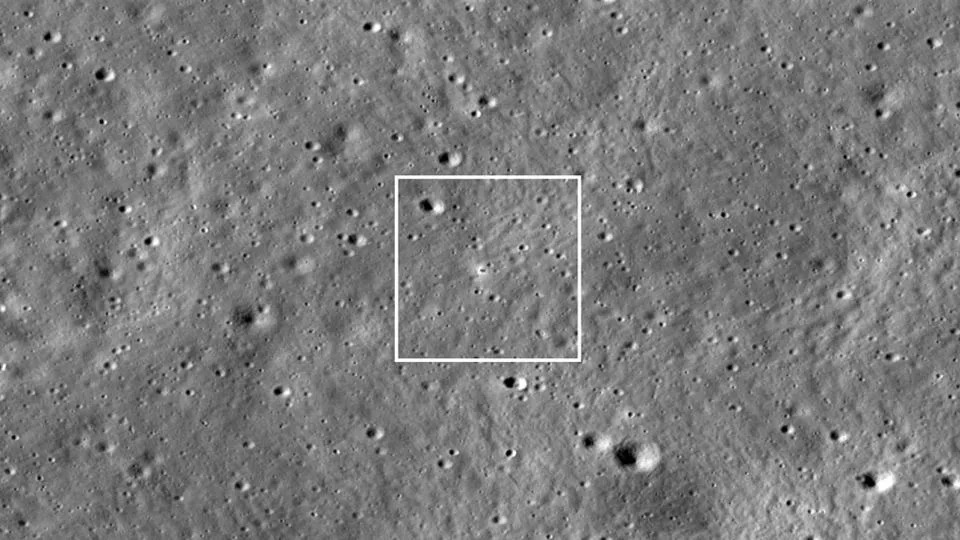
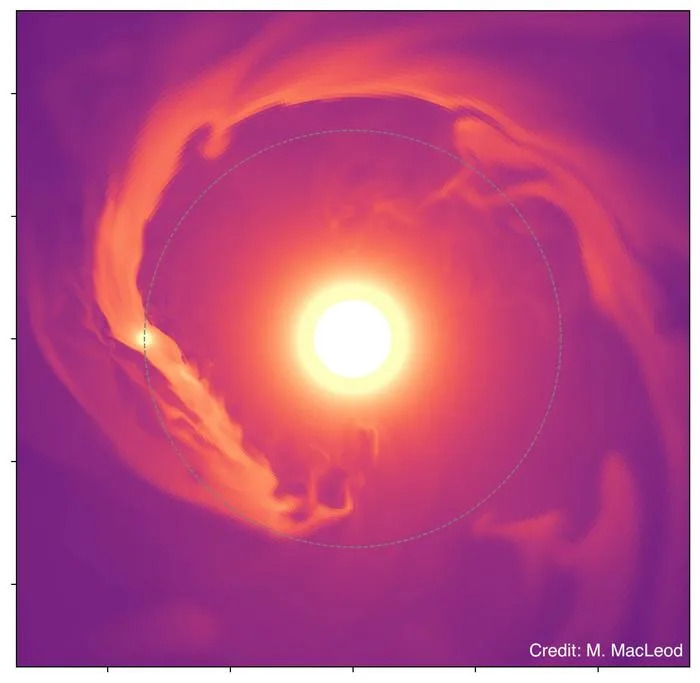
No comments:
Post a Comment